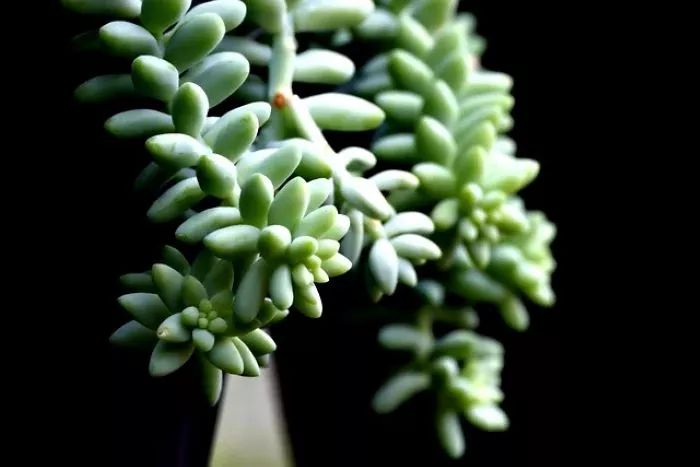Succulents are popular for their unique beauty and low maintenance requirements. They thrive in well-draining soil and prefer to dry out between waterings. However, many decorative pots do not have drainage holes, which can pose challenges for succulent care. Planting succulents in pots without drainage holes requires careful consideration of soil moisture and drainage techniques. This article will guide you through the process of successfully planting succulents in pots without drainage holes. You will learn about the necessary materials, planting techniques, and ongoing care.
Understanding the Risks
Pots without drainage holes can lead to excess moisture, which is detrimental to succulents. Overwatering is one of the most common mistakes made with these plants. When water accumulates at the bottom of the pot, it can cause root rot, a condition that can quickly kill your succulents. Therefore, it is crucial to implement strategies that will help manage moisture levels effectively.
Gathering Materials
Before you begin planting, gather all the necessary materials. You will need the following items
A pot without drainage holes
Succulent plants of your choice
Cactus or succulent potting mix
Small stones or gravel
Activated charcoal (optional)
A small trowel or spoon for planting
A moisture meter (optional but helpful)
Choosing the right pot is essential. Ensure that the pot is the appropriate size for your succulents. A pot that is too large can retain excess moisture, while a pot that is too small may not provide enough room for root growth.
Preparing the Potting Mix
Succulents require well-draining soil to thrive. A commercial cactus mix is an excellent choice, as it is designed specifically for succulents. If you prefer to make your own mix, combine regular potting soil with perlite or coarse sand. A good ratio is two parts potting soil to one part perlite or sand. This mixture will help ensure adequate drainage and aeration for your plants.
To further enhance drainage, consider adding a layer of small stones or gravel to the bottom of the pot. This layer will help prevent soil from clogging and allow any excess moisture to flow away from the roots.
Adding Activated Charcoal
Activated charcoal is an optional but beneficial addition to pots without drainage holes. It helps absorb excess moisture and odors, keeping the soil fresh. If you choose to use activated charcoal, add a thin layer on top of the gravel or stones before adding the potting mix. This layer will help improve air quality in the soil and prevent the growth of harmful bacteria.
Planting the Succulents
Now it is time to plant your succulents. Start by removing the succulents from their original containers. Gently squeeze the sides of the pot to loosen the soil. Be careful not to damage the roots during this process.
Once the succulents are free, inspect the roots. Trim any brown or mushy roots with clean scissors. Healthy roots should be firm and white or light tan.
Make a small hole in the potting mix with your finger or a small tool. Place the succulent in the hole, ensuring that the base of the plant is level with the top of the soil. Fill in around the roots with more potting mix, gently pressing it down to eliminate air pockets.
If you are planting multiple succulents in one pot, space them appropriately to allow for growth.
Watering Techniques
Watering succulents in pots without drainage holes requires a different approach. After planting, wait about a week before watering to allow the roots to settle. When you do water, do so sparingly. Use a spray bottle or a watering can with a narrow spout to moisten the soil lightly.
Water only until the soil is damp, not saturated. It is important to avoid letting water accumulate at the bottom of the pot. To check moisture levels, you can use a moisture meter or stick your finger into the soil. If the top inch of soil feels dry, it is time to water.
Providing the Right Environment
Succulents thrive in bright, indirect sunlight. Place your pot in a location where it can receive ample light without being exposed to harsh direct sunlight. If you notice the leaves stretching or becoming leggy, this may indicate that the plant is not getting enough light.
The ideal temperature for succulents is between 65°F and 80°F (18°C to 27°C). They can tolerate slightly cooler temperatures but should be protected from frost.
Monitoring Growth and Health
Once your succulents are planted, monitor their growth and health. Look for signs of new growth, such as small leaves or offsets. Healthy succulents will have firm, plump leaves and vibrant colors.
If you notice any signs of wilting, yellowing, or mushiness, check the soil moisture. Adjust your watering schedule as needed. Remember that succulents prefer to dry out between waterings.
Fertilizing Succulents
Succulents do not require frequent fertilization. However, during the growing season, which typically runs from spring to early fall, you can feed them with a diluted liquid fertilizer designed for succulents. Use a half-strength solution and apply it every four to six weeks. Avoid fertilizing during the winter months when the plants are dormant.
Conclusion
Planting succulents in pots without drainage holes is possible with the right techniques. By carefully managing moisture levels and providing a suitable environment, you can successfully grow healthy succulents in these pots. Remember to monitor your plants regularly and adjust your care routine as needed. With attention and care, your succulents will thrive, adding beauty and charm to your space. Enjoy the process of nurturing your plants and watching them grow.


